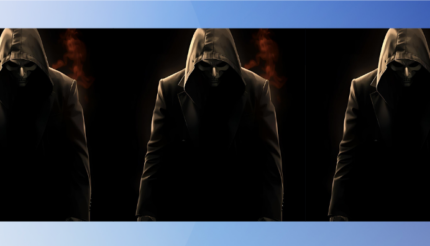Walk through any business park , industrial estate or town, and you’ll see them everywhere. The restaurant owner pulling 80-hour weeks. The consultant who hasn’t taken a real holiday in three years. The shop owner who’s there every single day, keys in hand, first to arrive and last to leave.
They call themselves entrepreneurs. They own businesses. They have teams and customers and profit margins.
But here’s what I see: someone working in their business instead of on their business. Someone who hasn’t built a business that works without them.
They’ve created jobs for themselves. Nothing more.
The Entrepreneurship Mirage
When someone starts a business, they often call themselves an entrepreneur. The truth is, not every business owner is an entrepreneur, and that distinction matters when it comes to growth, freedom, and impact.
Business owners build jobs. Entrepreneurs build assets.
A business owner ends up working in the business. Delivering the product, managing the team, firefighting, wearing all the hats. It’s still a job, just one they created themselves.
An entrepreneur builds systems, people, and processes so the business can scale and run without them. They’re not tied to the day-to-day. They’re focused on building an asset that works for them.
The statistics reveal this trap clearly. One in three small business owners work over 46 hours per week. That’s 10 hours more than average employees. Yet 70% prefer to do everything themselves.
They escaped employment only to become the most demanding boss they’ve ever had.
The Ceiling Nobody Talks About
The ceiling doesn’t announce itself with flashing lights or balance sheet warnings. It creeps in quietly until suddenly, the business owner feels trapped in something they built.
Time poverty hits first. “I don’t have time to think.” Every day fills with client calls, staff questions, delivery issues, admin. The calendar is packed, but nothing feels strategic. Even holidays become working from a different location.
The moment of realisation: “I built this business for freedom, but I have less time now than when I was employed.”
Then profit stalls. Turnover might climb, but profit doesn’t follow. More complexity, more team, more clients, but somehow less money in the bank. They can’t afford to hire properly or invest in growth.
“We’re doing more, but keeping less. This isn’t sustainable.”
Team dependency becomes obvious. Staff lean too heavily on the owner. Decisions bottleneck. When the owner’s away, the business feels shaky. Everyone knows it.
“I’m the glue, and I’m exhausted.”
Growth plateaus. The business reaches a certain size and stalls. Marketing efforts don’t land like before. The owner’s instinct says there’s potential, but they can’t see how to unlock it.
Finally, identity conflict emerges. The passion that started everything fades. They dread Mondays. They feel guilty because the business appears successful, but it doesn’t feel good anymore.
“I’m running this thing, but it’s not lighting me up. Is this it?”
The Psychology Behind The Trap
The shift sounds simple: delegate more, build systems, get out of the weeds. But underneath that simplicity lives deep psychological resistance that keeps even smart, driven business owners stuck.
Identity and ego create the first barrier. Many owners became successful by doing. Their self-worth ties to being the fixer, the linchpin, the one who always shows up.
Letting go of control feels like letting go of relevance. “If I’m not the centre of this business, what am I?”
Fear of delegation compounds the problem. Delegating requires tolerating imperfection while people grow. That’s hard for high-standards leaders.
“By the time I’ve explained it, I could’ve done it myself.”
So they never invest time to train others properly. They stay overwhelmed by choice.
Short-term thinking provides constant excuses. They know they need to work on the business. But right now there’s a new hire to onboard, a big client to service, a problem to solve.
There’s always a reason to delay. Because they’re good at surviving chaos, they never get desperate enough to force change.
The ceiling becomes a comfort zone. Painful but familiar.
Some stay busy to avoid hard questions: Is this business really working? Am I still enjoying it? What’s this all been for?
Stillness forces reflection. That can be terrifying.
What Real Transformation Looks Like
When someone finally makes the shift from business employee to actual owner, the transformation shows up in how they think, lead, and live.
They move from doing to designing. Instead of writing proposals and chasing payments, they spend time designing systems, defining strategy, building culture, mentoring key people.
They stop asking “How do I do this?” and start asking “How do I build a machine that does this without me?”
Chaos gets replaced with cadence. Days become strategic instead of reactive. Weekly dashboards, structured planning sessions, strategic calendar blocks. They create space to think.
The business runs on systems, not adrenaline.
They build teams that think without them. Roles become clear, outcomes get measured, accountability gets owned. Team members grow into decision-makers, not just task-completers.
The owner becomes the coach, not the crutch.
They learn to say no. A lot. They protect focus, fire clients that don’t fit, and reject opportunities that distract from the vision.
Scarcity mindset gets replaced with strategic clarity.
Most importantly, they get their lives back. They take holidays without checking emails. They train for marathons. They coach their kid’s football team. They live.
The business becomes a vehicle for life, not a life sentence.
The Cultural Problem We Won’t Admit
This goes deeper than individual business struggles. We’ve built a culture that romanticises grind, glorifies busyness, and equates self-worth with output.
For many business owners, being needed becomes a drug. Every staff question validates their importance. Every problem they solve reaffirms their role. Every late night fuels the narrative that they’re the only one who truly cares.
The paradox: the more heroic they become, the less scalable their business gets.
We celebrate the hustler, not the architect. Media idolises the “I work 90 hours a week” founder. But nobody talks about the quiet entrepreneur who works 20 hours and has a systemised, profitable business.
We’ve made grind the goal. We’ve forgotten that the real goal is freedom.
The research confirms this cultural trap. 62% of business owners say the stress of ownership is worse than they imagined.
The Path Forward
Real entrepreneurship means building something that serves your life instead of consuming it. It means having the courage to let go and the clarity to design a life that actually fits.
Michael Gerber captured this perfectly in The E-Myth: most businesses start when technicians have an “entrepreneurial seizure.” They assume that understanding the technical work means understanding the business that does that work.
Nothing could be further from the truth.
The transformation requires working on your business, not in it. Building systems that work without you. Creating a mature business that knows how it got where it is and what it must do to get where it wants to go.
But here’s what nobody tells you: there’s a moment of pain in the middle. A messy, uncomfortable space where everything feels harder before it gets better.
That’s the make-or-break point. When you delegate and things get missed. When quality drops temporarily. When your calendar clears but you feel restless.
When you start to feel useless.
That’s the identity crisis. You’ve spent years equating value with busyness. Now you’re not in the weeds, and you wonder: “If I’m not needed, what am I here for?”
Most people turn back at this point. They re-insert themselves into operations. They blame the team. They numb the discomfort with busywork.
The breakthrough comes from pushing through that valley. From having a clear vision of what’s possible. From getting the right support and accountability. From celebrating small wins that prove the model works.
From giving yourself permission to redefine success.
You’re allowed to work on the business. You’re allowed to step back. You don’t need to be the hero anymore.
The moment most people give up is right before the freedom kicks in.
True entrepreneurship isn’t about being the busiest person in the room. It’s about building something that works without you being in the room at all.
The question isn’t whether you own a business. The question is whether you’ve built a business that works without you, or just created the most demanding job you’ve ever had.
Most business owners are still employees. The only difference is they can’t quit





